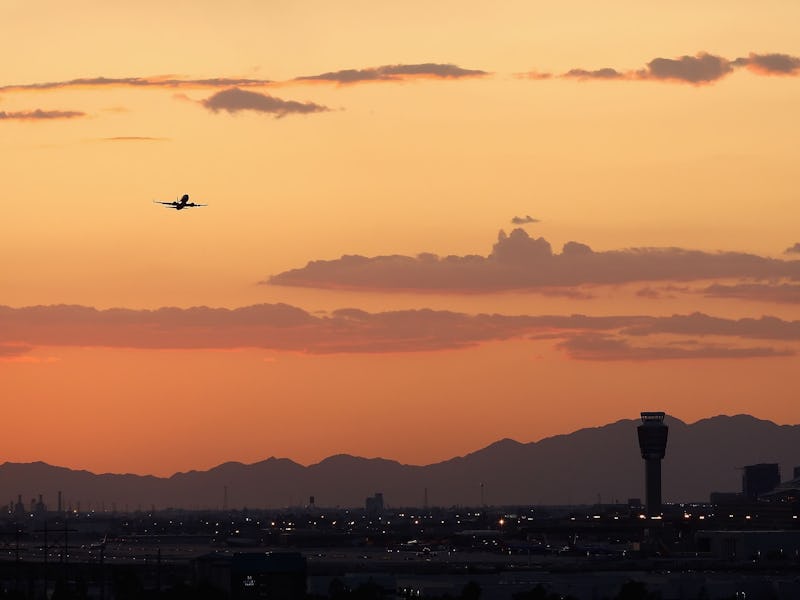
Dozens of flights were cancelled in Phoenix, Arizona Tuesday. But none of the usual suspects — a computer error or onboard brawl — were to blame. These flights were grounded because it was simply too hot for the planes to fly.
The local temperature in Phoenix was expected to hit 120 degrees on Tuesday, just shy of the city’s all-time high of 122 degrees on June 26, 1990. While many large planes can cope with these temperatures, the local Fox News station reported that smaller Bombardier CRJs, used by American Airlines for short regional flights, can’t operate optimally above 118 degrees. The airline was forced to ground a number of its aircraft in Phoenix’s Sky Harbor International Airport until the heatwave passes.
Why the Planes in Phoenix Can’t Fly When It’s Very Hot
At a physical level, the issue comes down to hot air: The warmer the air, the thinner it is, and the thinner the air, the more thrust is required by the jet engine’s to take off. If the air is too thin, the engine’s don’t have enough power to safely take off. Yet airlines in other, even hotter parts of the world (as well as airports at high elevations where the air is thin) have been coping, largely successfully, with 120 degree weather for years. How? Those airports send off planes … at night.
Right now, we already have planes that can handle much higher than 118 degrees. But they’re big. Manufacturing giants Boeing and Airbus both have planes for long-haul flights that can handle temperatures as high as 126 or 127 degrees. But replacing small planes with bigger ones isn’t really a cheap or practical option for short flights. Plus, even large planes require extra thrust to get off the ground in a heatwave, raising the cost of each takeoff even further.
That’s part of what makes flying more at night a potentially clever solution to a growing problem. As everyone already knows, it’s cooler after the sun’s gone down, so planes are more likely to make it up, up, and away without that extra money lost on fuel.
The BBC reports that many Middle Eastern and South American airports have long tried to arrange for nighttime flights, though hubs like Dubai are sending out planes around the clock.
But even with more powerful planes and a new schedule, flying out of the American southwest is going to get harder as global temperatures rise.
In 2016, the United Nations’s International Civil Aviation Organization published an environmental report for airlines foreshadowing the troubles in Phoenix — and a whole lot more. In addition to difficult, expensive take-offs or flights altogether cancelled from heat, the ICAO report warns of a future with coastal airports lost to ocean rise, changes in the jet stream and increased turbulence, and more frequent sand and dust storms that reduce visibility.